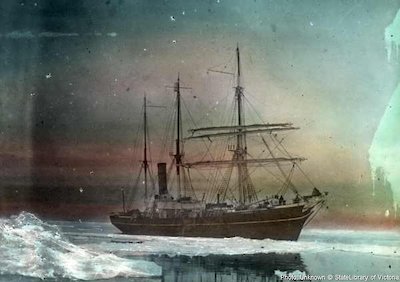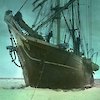Postscript: Aurora’s final years
In their own words
For years she had survived every trial in Arctic and Antarctic waters. Then to sink without trace in the Pacific! Various theories have been advanced to explain her disappearance. Among them are that she struck one of the mines laid off Cape Farewell at the entrance to Cook Strait by the German raider Wolf; that she was in collision with another vessel crossing the Pacific, or that during a heavy gale she sprang a leak and foundered. We shall never know what happened.
— JK Davis, High Latitude
By 1914 there was reason to think that a long and illustrious polar career had ended for Aurora after 36 years in the Arctic and over two years toiling for Douglas Mawson’s AAE. But Ernest Shackleton had other ideas, and thereby hangs yet another tale of survival against the odds.
Shackleton bought the vessel from the AAE in 1914 to deploy the Ross Sea party for his planned trans-Antarctic expedition. These 12 men would lay food depots for Shackleton’s main party, crossing the continent from the Weddell Sea.
Under the command of Aeneas Mackintosh, Aurora left Hobart in December 1914 with the dogs remaining from the AAE. It searched in vain for the overdue fisheries vessel Endeavour (on which Charles Harrisson, the AAE biologist, lost his life) before deploying Shackleton’s party at Ross Island, Antarctica, late in January 1915.
It was planned that Aurora would remain there through the 1915 winter, but things didn't work out that way. Lying at the edge of fast ice ice and connected to shore anchors by steel cables, the ship was thought to be safe, but in a late autumn storm the cables were severed and the ship was at the mercy of the ice.
With second officer, Joseph Stenhouse, in charge, the ship was squeezed, bruised and battered by encroaching ice through the 1915 winter. Carried north by wind and current, the helpless ship remained locked in the ice throughout the summer. Not until the middle of March 1916 did the ice relax its relentless grip.
Rudderless and leaking badly, the ship made its painful way north toward New Zealand. With the help of a tug it finally reached Port Chalmers, where it went into dry dock for repairs. JK Davis later compared the trial of Aurora with the crushing of Endurance around the same time – Aurora, unlike Endurance, was ‘a stoutly built old Dundee whaler’.


